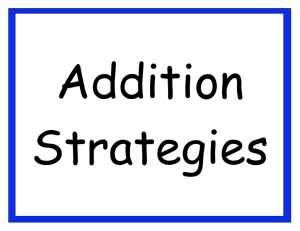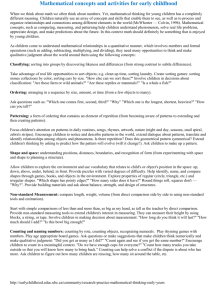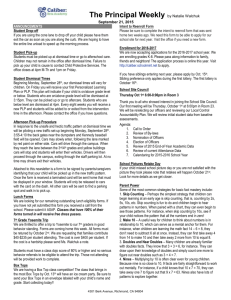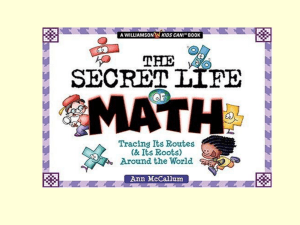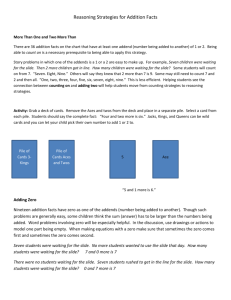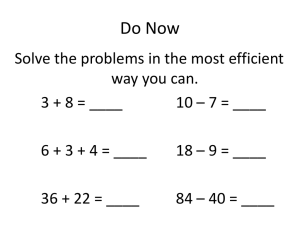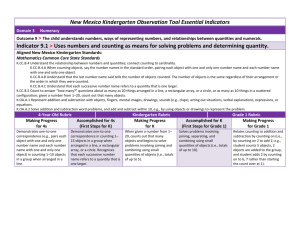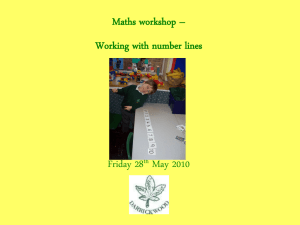Mathematics_One language
advertisement
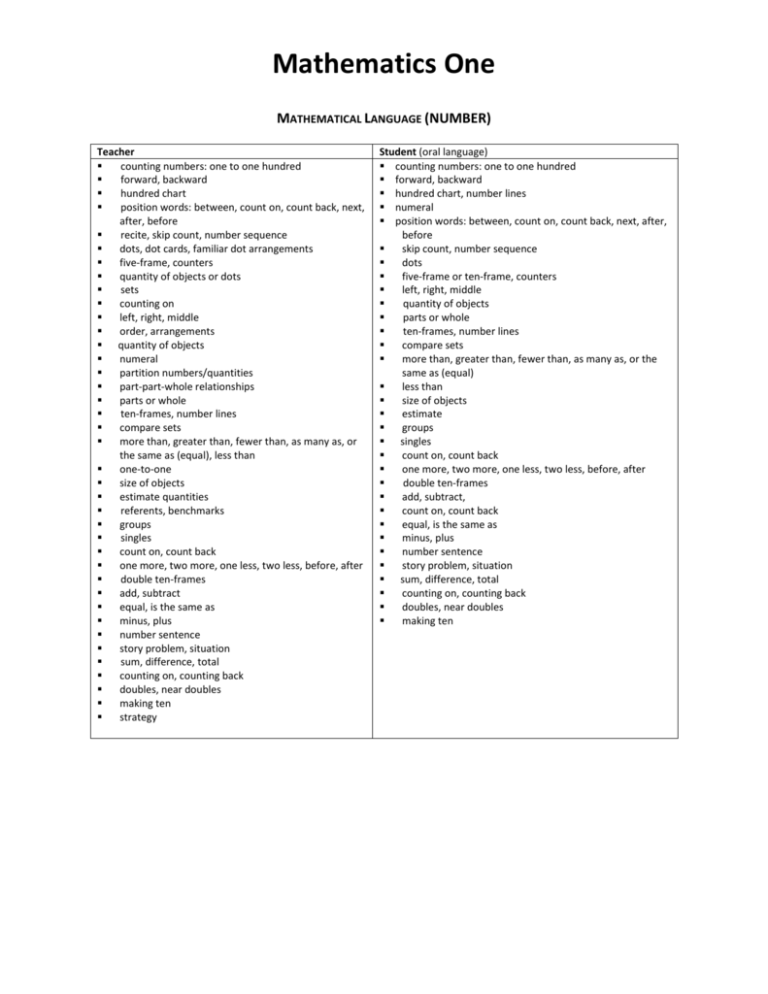
Mathematics One MATHEMATICAL LANGUAGE (NUMBER) Teacher counting numbers: one to one hundred forward, backward hundred chart position words: between, count on, count back, next, after, before recite, skip count, number sequence dots, dot cards, familiar dot arrangements five-frame, counters quantity of objects or dots sets counting on left, right, middle order, arrangements quantity of objects numeral partition numbers/quantities part-part-whole relationships parts or whole ten-frames, number lines compare sets more than, greater than, fewer than, as many as, or the same as (equal), less than one-to-one size of objects estimate quantities referents, benchmarks groups singles count on, count back one more, two more, one less, two less, before, after double ten-frames add, subtract equal, is the same as minus, plus number sentence story problem, situation sum, difference, total counting on, counting back doubles, near doubles making ten strategy Student (oral language) counting numbers: one to one hundred forward, backward hundred chart, number lines numeral position words: between, count on, count back, next, after, before skip count, number sequence dots five-frame or ten-frame, counters left, right, middle quantity of objects parts or whole ten-frames, number lines compare sets more than, greater than, fewer than, as many as, or the same as (equal) less than size of objects estimate groups singles count on, count back one more, two more, one less, two less, before, after double ten-frames add, subtract, count on, count back equal, is the same as minus, plus number sentence story problem, situation sum, difference, total counting on, counting back doubles, near doubles making ten MATHEMATICAL LANGUAGE (PATTERNS) Teacher core, element describe, reproduce, extend, create repeating pattern compare left, right, balance, imbalance more than, fewer than, same as/equal, equality/inequality, equal sign, not equal to/not same as one-to-one quantity balance scale compare left, right make sets number expression, number sentence quantity same as, equality, equal sign Student (oral language) core, element describe, reproduce, extend, create repeating pattern compare left, right more than, fewer than, same as/equal, equal sign, not equal to/not same as quantity balance scale compare make sets quantity same as, equal sign MATHEMATICAL LANGUAGE (MEASUREMENT) Teacher area: covers more/covers less, greatest/least area, and largest/smallest area capacity: holds more/holds less, holds the same full, empty length, width, distance, height length: longest/shortest, shortest/tallest, widest/narrowest, thickest/thinnest, longer/shorter mass: heaviest/lightest, heavier/lighter order, compare, fill, cover, match volume: biggest/smallest, bigger/smaller Student (oral language) area: covers more/covers less, greatest/least area, and largest/smallest area capacity: holds more/holds less, holds the same full, empty length, width, distance, height length: longest/shortest, shortest/tallest, widest/narrowest, thickest/thinnest, longer/shorter mass: heaviest/lightest, heavier/lighter order, compare, fill, cover, match volume: takes up more/less space, bigger/smaller MATHEMATICAL LANGUAGE (GEOMETRY) Teacher 2-D shapes: triangle, square, rectangle, circle, trapezoid, hexagon, rhombus 3-D objects: cylinder, sphere, cone, cube, prism, pyramid attribute how are they alike/different roll, stack, slide sides, edges, corners/vertices, faces sorting groups of objects sorting rule Student (oral language) 2-D shapes: triangle, square, rectangle, circle 3-D objects: cylinder, sphere, cone, cube, prism, pyramid how are they alike/different roll, stack, slide sides, corners, faces sorting groups of objects sorting rule
